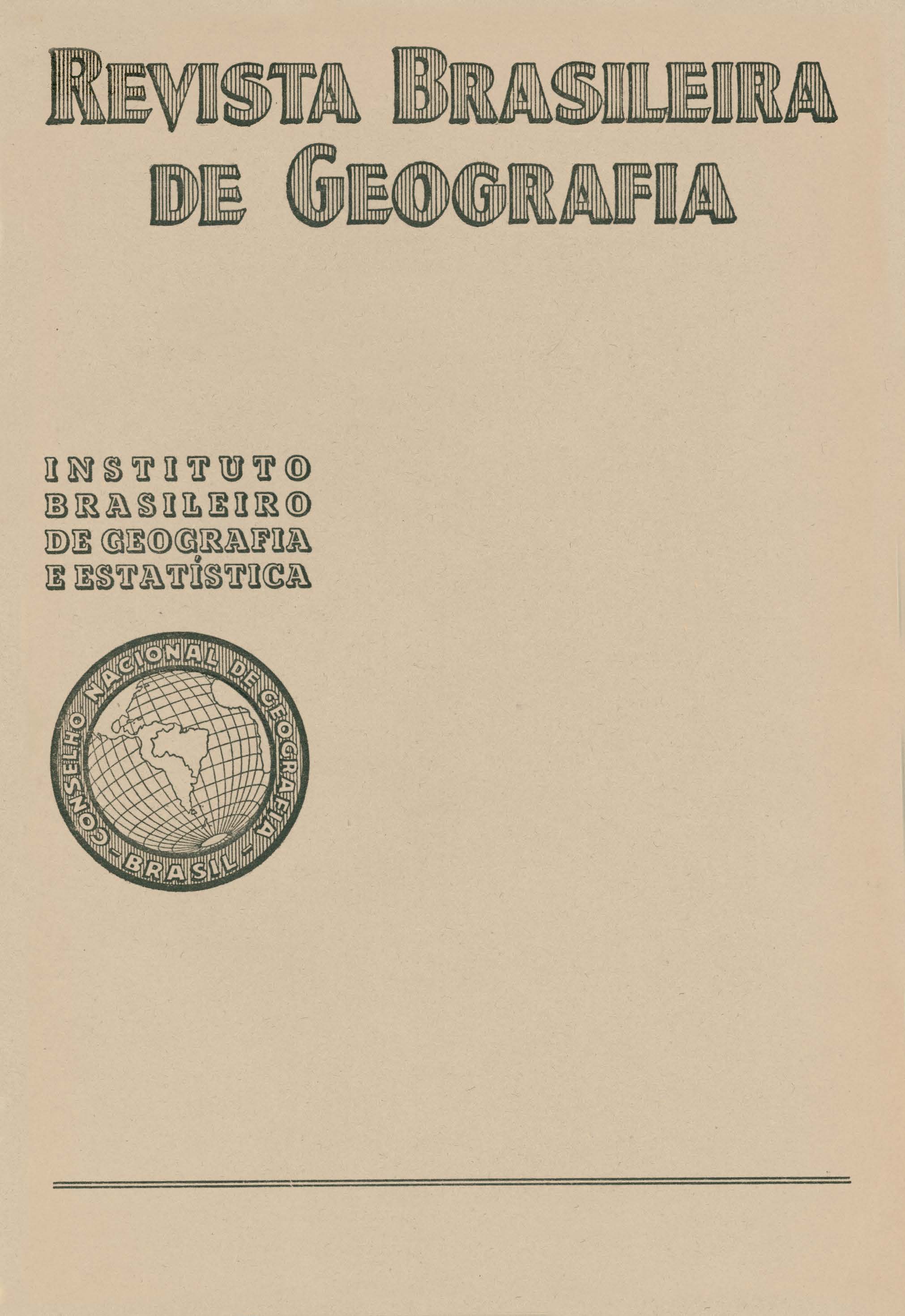Comércio ambulante e ocupações de rua no Rio de Janeiro
Palavras-chave:
Geografia Econômica;, Setor informal;, Vendedores ambulantes;, ComércioResumo
Among the various anthropogeographical manifestations of commerce the author tries to focus just the one regarding peddlery, however considering as such other occupations which have no commercial feature.
Next the author analyses each of the features under which he faces the peddlers or hawkers o f Rio and their goods:
- a) nature and classification of the services they render;
- b) working hours;
- c) age, color, sex and nationality of peddling traders;
- d) type of transportation used;
- e) kind of outcry;
- f) legal restrictions to such trade;
- g) historical evolution of peddlery and hawking; (the latter item, however, is not covered by the present article)
The author presents the statistics concerning peddlers and hawkers according to the objective o f thei1 activities and comes to disclose the following figures as a whole: peddlers for foodstuff - 6,136; for clothing articles - 675; for housekeeping articles - 523; for amusement and for comfort objects - those for social character as, postmen, garbage collectors and messengers included - 6, 747 The peddling traders of the various classes who had an occupation in the Federal District in 1942 were 14,081 in number. Classifying them by sorts, the author verified that there existed 3,915 business-house employees for making deliveries, 615 employed for delivering milk, and so on in a decreasing order in accordance with the table in the article.
The working hours kept by peddlers or hawkers are subject to legal restrictions which are pointed out by author and accompanied by. his commentaries. As to sex, at present males are prevalent, this being the contrary of what' happens in other counties, and even with the situation as it was in Rio de Janeiro in both colonial and slavery times. As regards minors, the author noticed that due to the lack of statistics it would be impossible to show exact figures; he tens however in what way he has been able to estimate at over 5,000 the number of minors employed in peddling commerce. Concerning nationality, the author believes that for some time in recent years a steady evolution has been visible with a view to nationalizing Rio de Janeiro commerce of peddlers again Predominantly composed of negroes in colonial and empire days, it was later hold by the immigrants (Portuguese, Italians, Syrians and Jews, in this order) and is now going into the hands of the mulatto.
As to t1ansportation means, Rio de Janeiro peddling commerce distinguishes from the similar ones in their countries on account of the very high percentage of those carrying them· selves the goods they sell or deliver either on their heads or under their arms As to animals used in Rio de Janeiro on the side of peddlers and hawkers for carrying merchandise, these are just the horse and the donkey, mainly the latter. Both, however, on a small number. The quality of such animals used for pulling vehicles is likewise exceedingly small. These are almost all mechanized, their agents being the motor, or gasoline (motor cars) or human power, they ate moved by their own passengers (bicycles, tricycles, etc). In 1941 there were 6,765 vehicles used by peddling traders, not including the motor cars because on statistics no exact information is found about the specific aims in the itens covering licenses for such vehicles. The license tax for peddlers and hawkers which in 1930 was as high as Cr$ 500,806 00 had doubled in 1943, since up to october o f that year 960,534 70 cruzeiros had already been paid up for that purpose.
The author has also classified the peddling traders according to the outcry, distinguishing same in "silent" and "aloud" and the latter ones again in:
- a) those using sound producing instruments, either musical or not, but not accompanied by human voice;
- b) those making use of both instruments and human voice;
- c) those who use just human voice, giving it, however, a characteristic modulation;
- d) those offering their goods aloud, but without modulating their words
The last paragraph of the article refers to stationary and may be looked at as belong introductory of anothe1 study by the same author, to be published on a later date in Revista Brasileira de Geografia on - "feiras-livres" (street markets).






